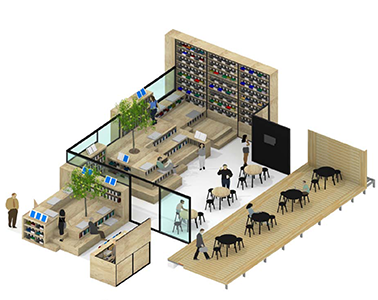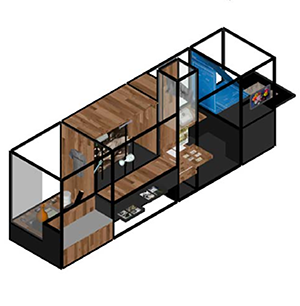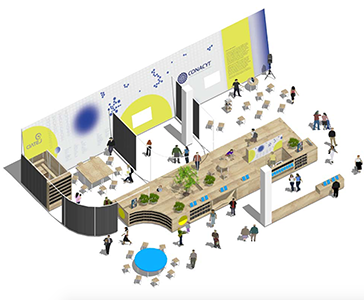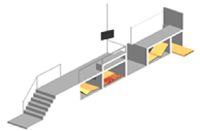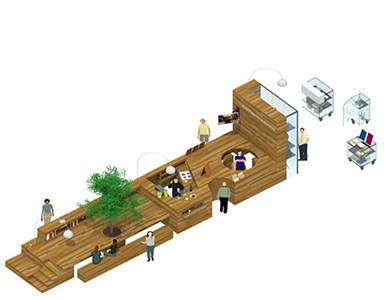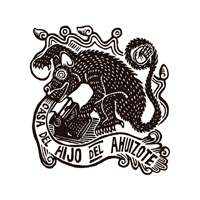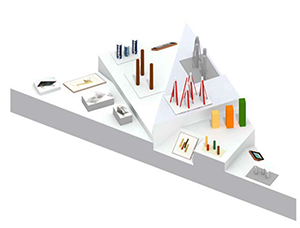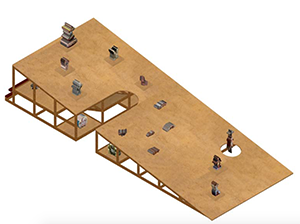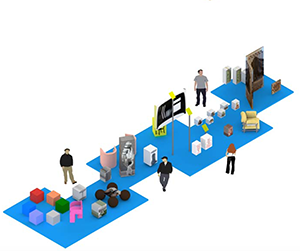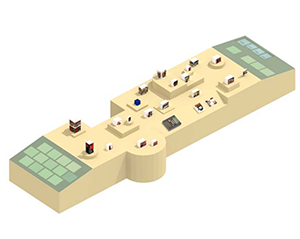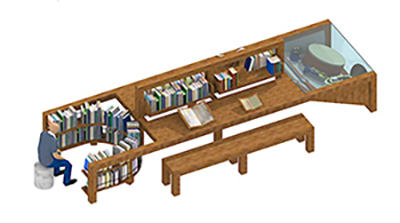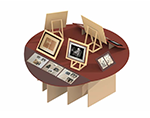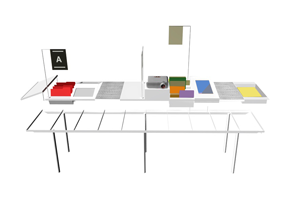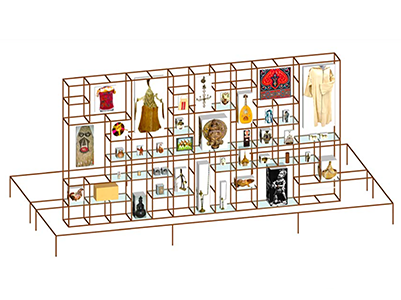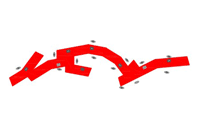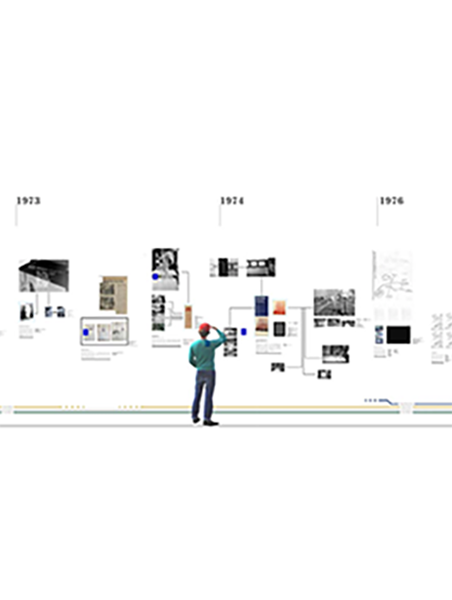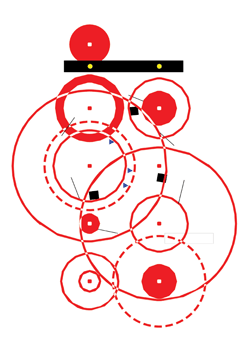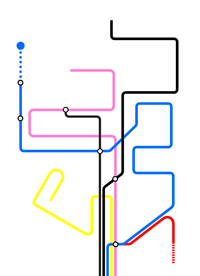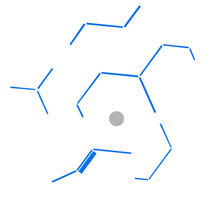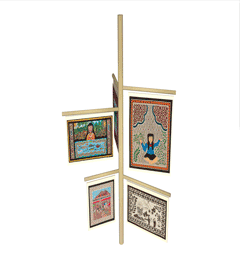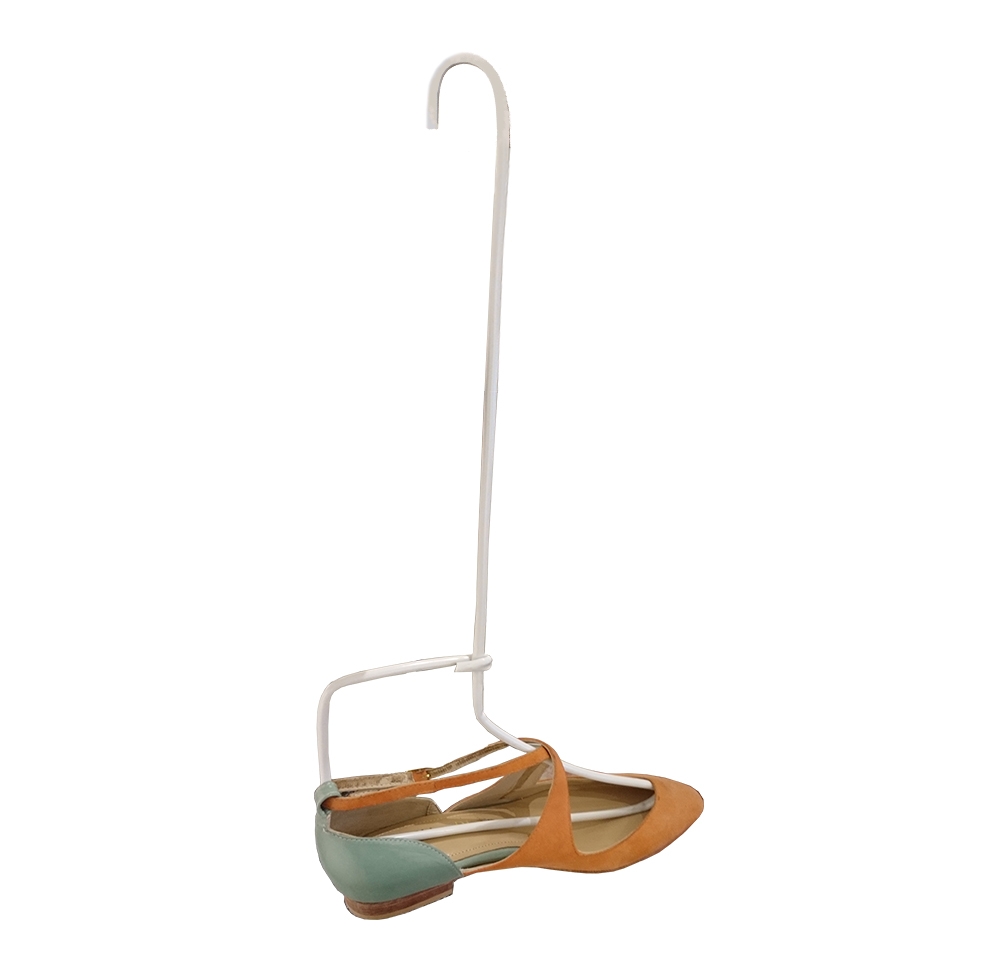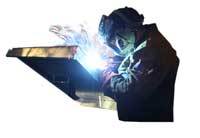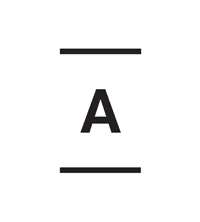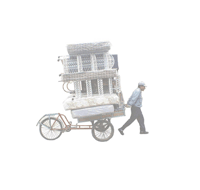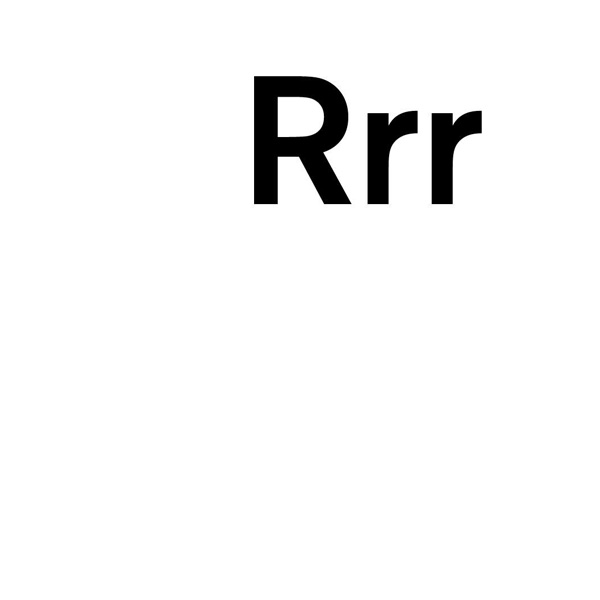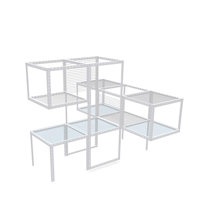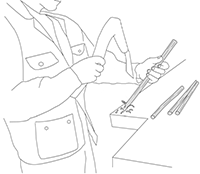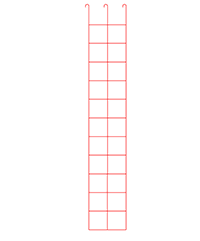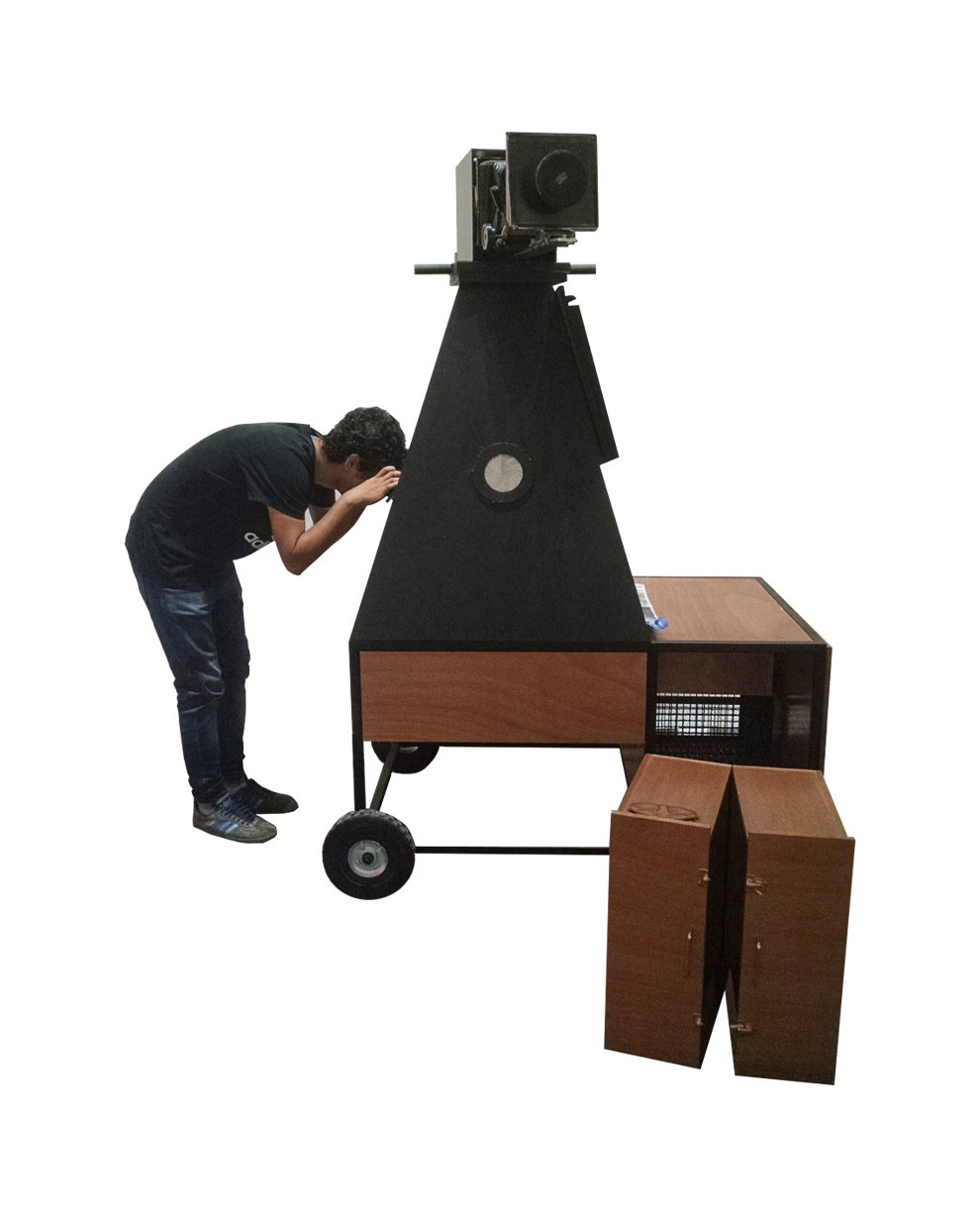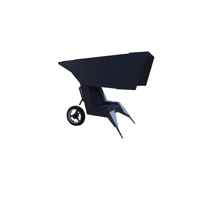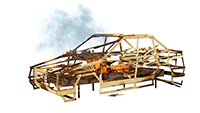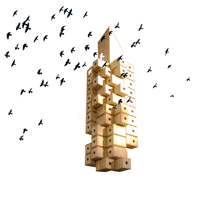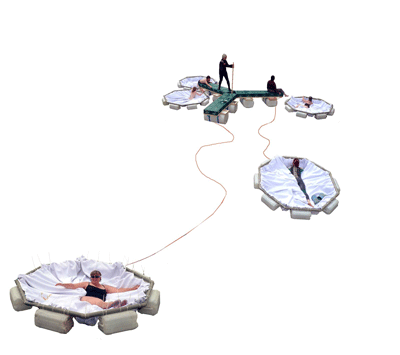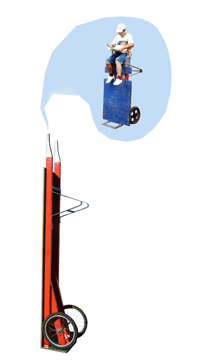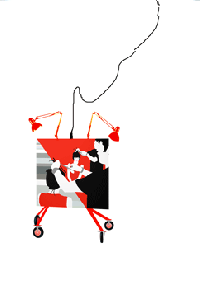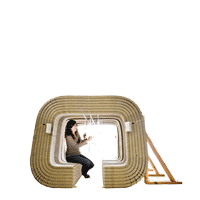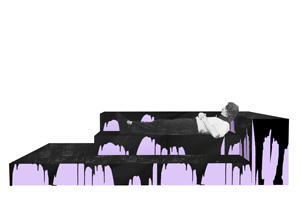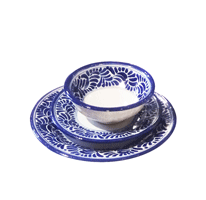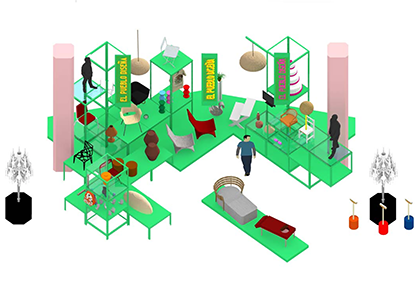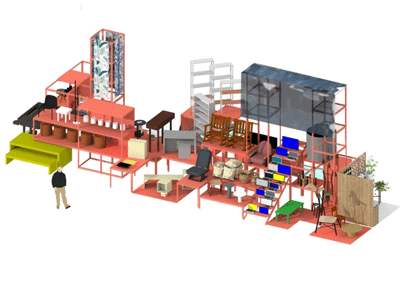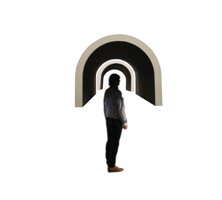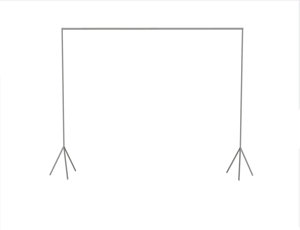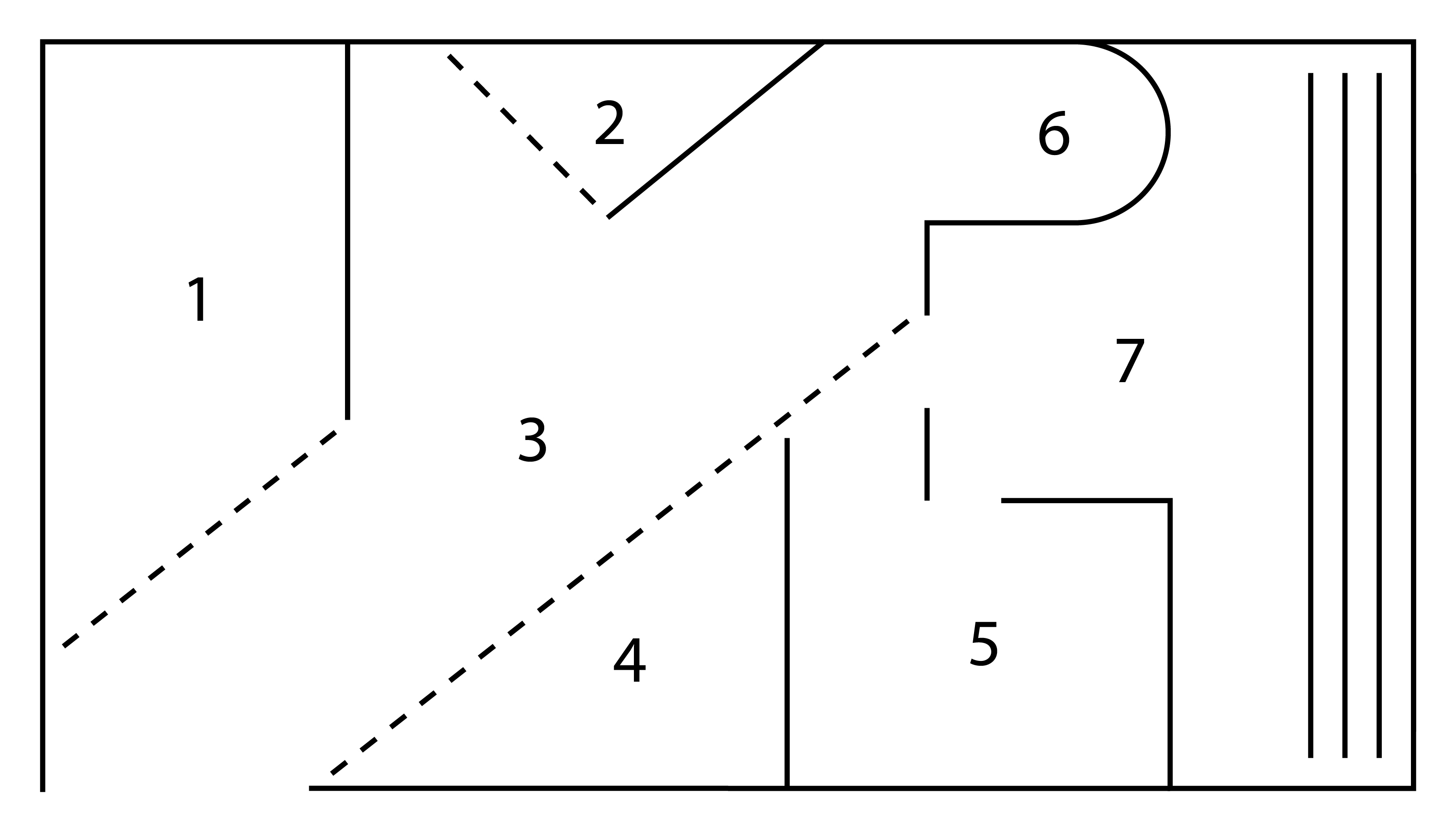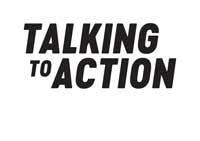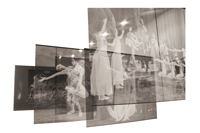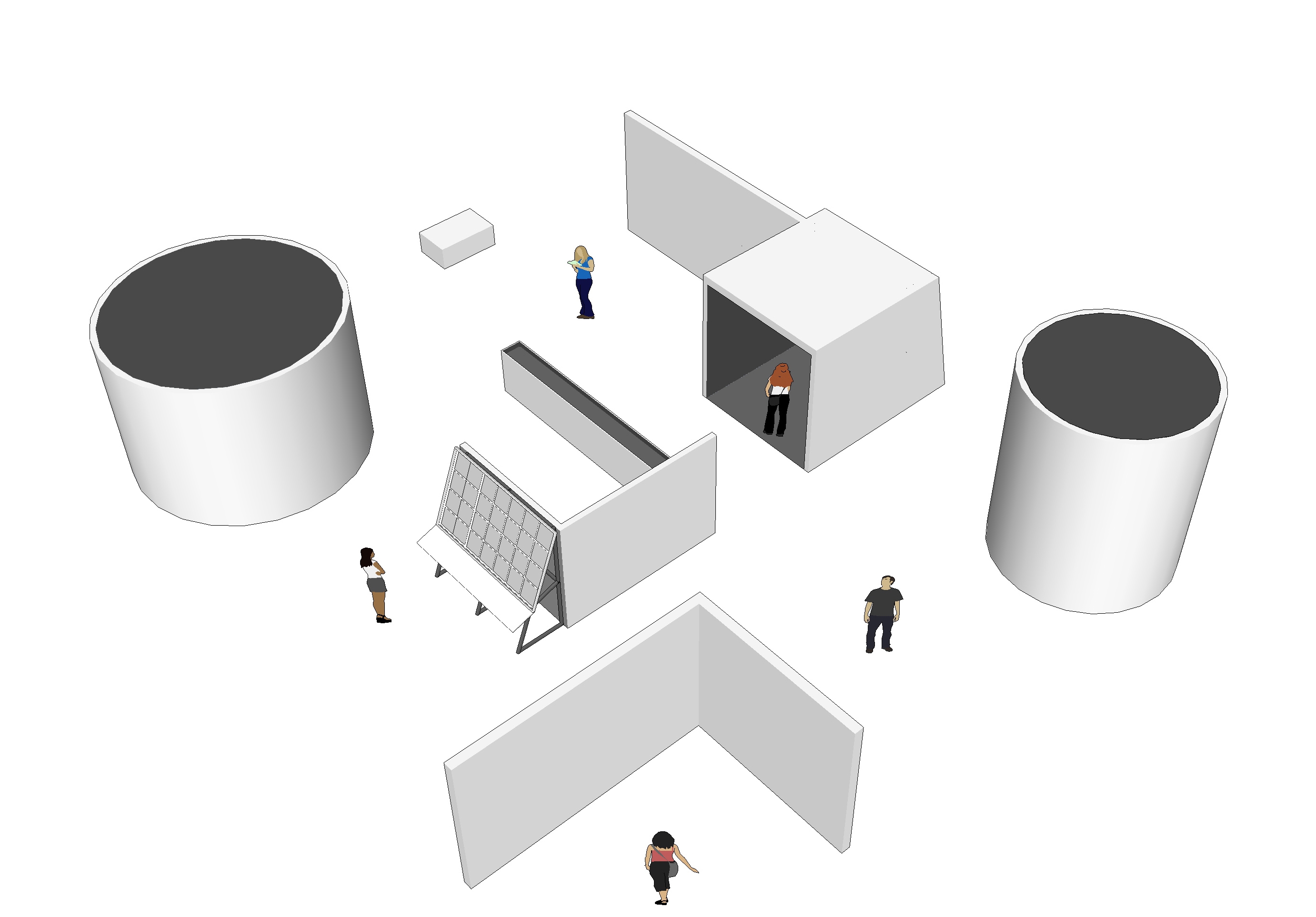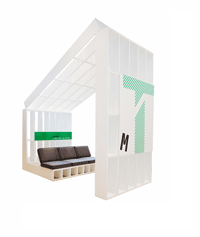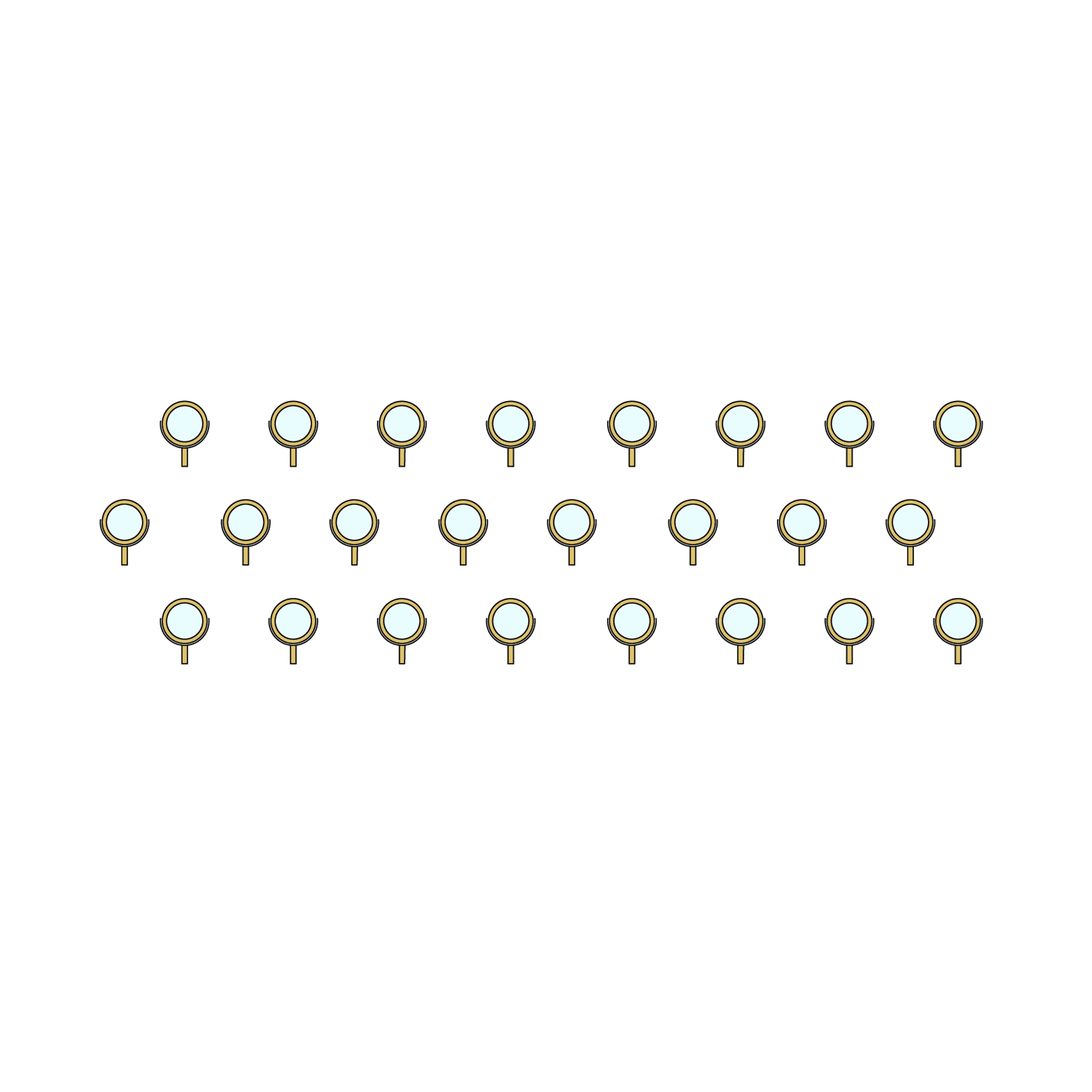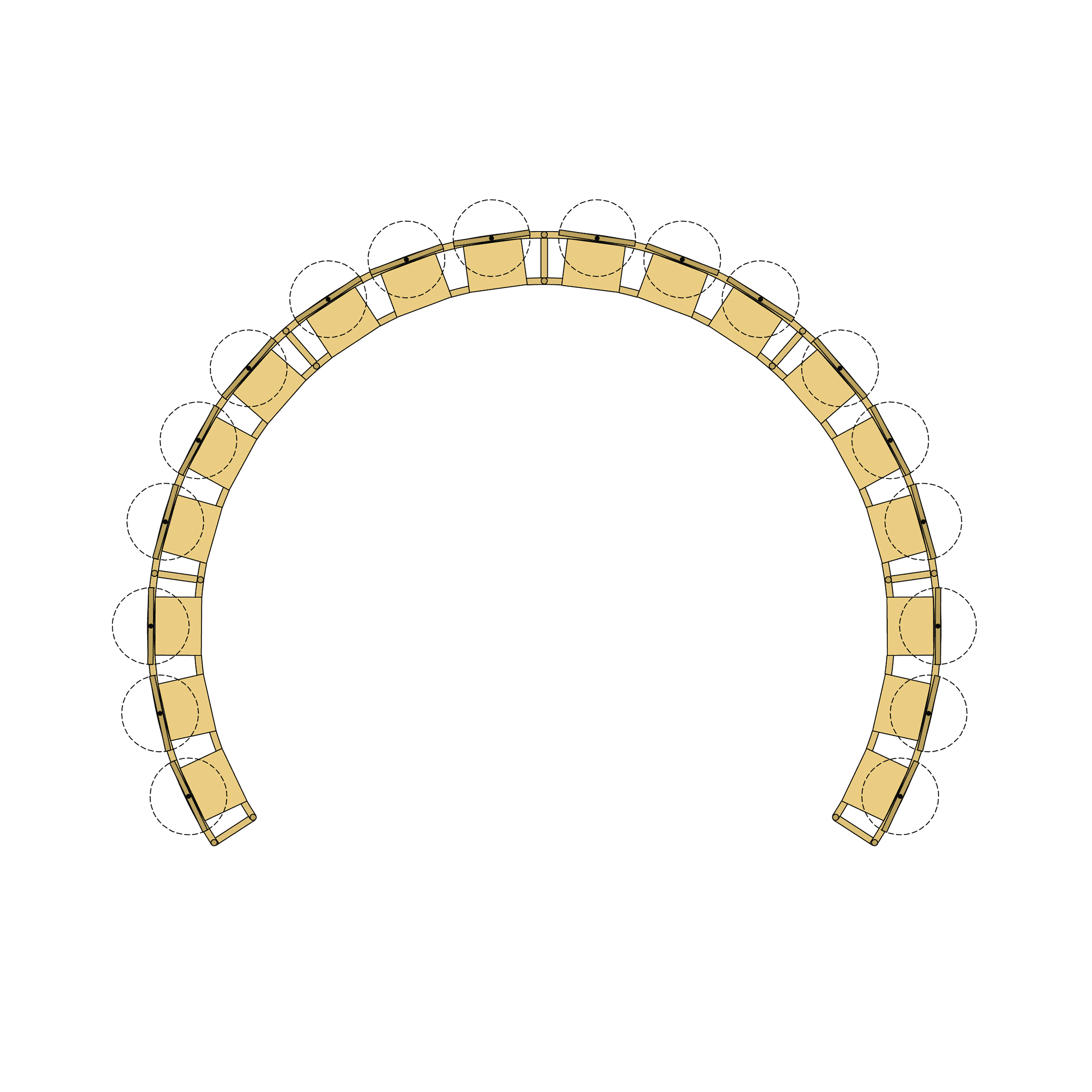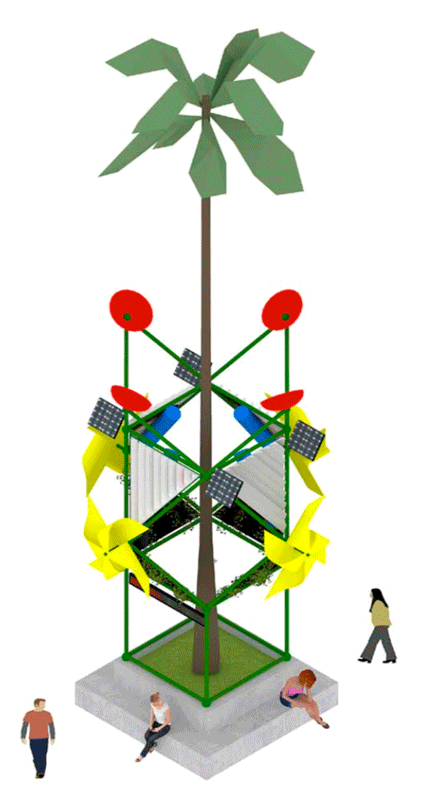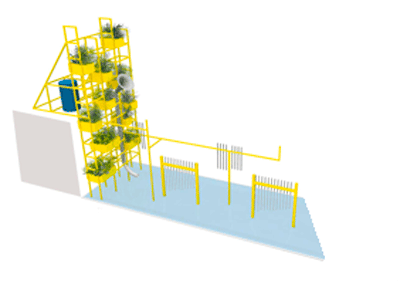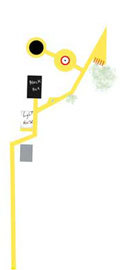Germen Estudio + Dérive Lab
Flor Urbana is made up of a modular, removable structure and uses solar, plant and mechanical devices to externalize and expose environmental factors such as air quality, ambient light or relative humidity, which are being measured by the monitoring sensors of PIP Ciudad Futuro.
It is like a tree vase vase, which surrounds the palm tree with an exoskeleton in the shape of a cuboctahedron and supports pinwheels, solar panels, water tanks and flower boxes. This device sees the palm tree as an antenna, a natural sensor and collaborates with it to make a cyborg sensor palm; an Urban Flower.
Its specific elements are:
- Natural photosynthesis: this process of plants converts solar energy into chemical energy and produces oxygen, allowing to reduce the amount of carbon dioxide (CO2) in the atmosphere in a natural way.
- Energy efficiency: autonomous solar panel that powers an LED lamp to illuminate the palm tree canopy.
- Green infrastructure: container and water filter that irrigates the vertical garden made with triangular pots of geotextile and vegetation from the region.
- Air quality: panel with ecological photocatalytic paint, which uses light to transform airborne particles harmful to health into harmless substances; pinwheel that shows the movement and speed of the air.
Flor Urbana was created from the need to communicate some concerns of the project Prototipos de Infraestructura Pública para una Ciudad del Futuro, developed in Guadalajara, México, by dérive LAB, with the aim of assuming public buildings as spaces for mitigating the climate impact in the Metropolitan Area, through the installation and adaptation of technologies that generate information on noise, air quality, transport, energy efficiency, among others.
Web: http://pipciudadfuturo.com
